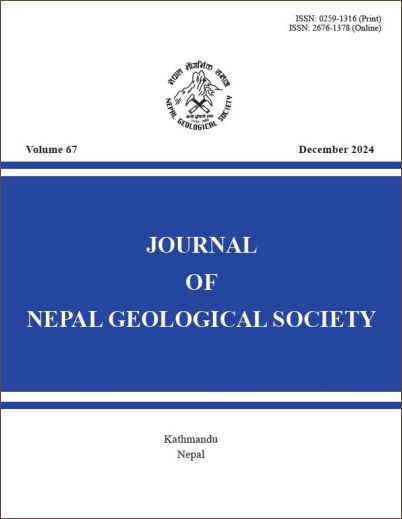Dynamics of active landslide along central Himalayan route: A case study of Guthitar landslide, Dhankuta, Nepal
DOI:
https://doi.org/10.3126/jngs.v67i1.74579Keywords:
Geophysical method, Himalaya, Landslide, Monitoring, Numerical ModellingAbstract
Landslides in the Nepal Himalayas are a common phenomenon because of the coupling effect of seismo-tectonic activities and the Asian Monsoon. Understanding landslides in this complex environment, particularly the behavior of active large landslides, is vital for sustainable infrastructure development. This study conducted comprehensive slope investigations, including geological, geophysical, and geotechnical investigation, along with instrumentation using inclinometers and a raingauge station, to identify the causes and mechanisms of failure at the active landslide slope at Guthitar on the Dharan-Dhankuta road. This landslide is active since 1987 but the movement has intensified from 2020 onwards. The detailed investigation reveals that the landslide exhibits multiple shallow-seated and deep-seated failure surfaces, some of which extend to the ground. Slope stability was modeled and analyzed using the Limit Equilibrium and Strength Reduction Methods. The results indicate multiple slip surfaces, with some discrepancies compared to field investigations, underscoring the limitations of numerical methods and the critical role of field monitoring systems. Furthermore, a comparison of rainfall data with deformation patterns from slope monitoring clearly demonstrates that prolonged rainfall increases the rate of movement by threefold. Thus, continuous landslide monitoring is essential to understand the mechanisms and triggers, enabling the implementation of effective landslide management strategies in the Himalayas.
Downloads
Downloads
Published
How to Cite
Issue
Section
License
© Nepal Geological Society




